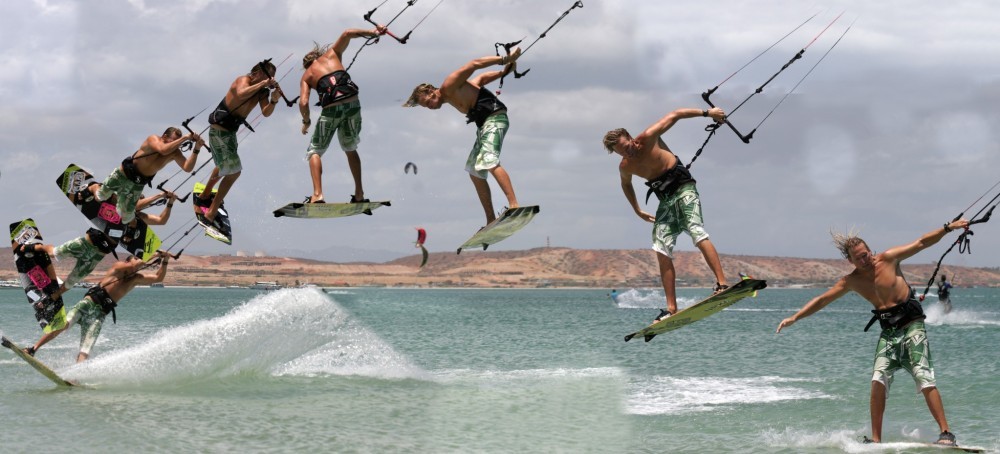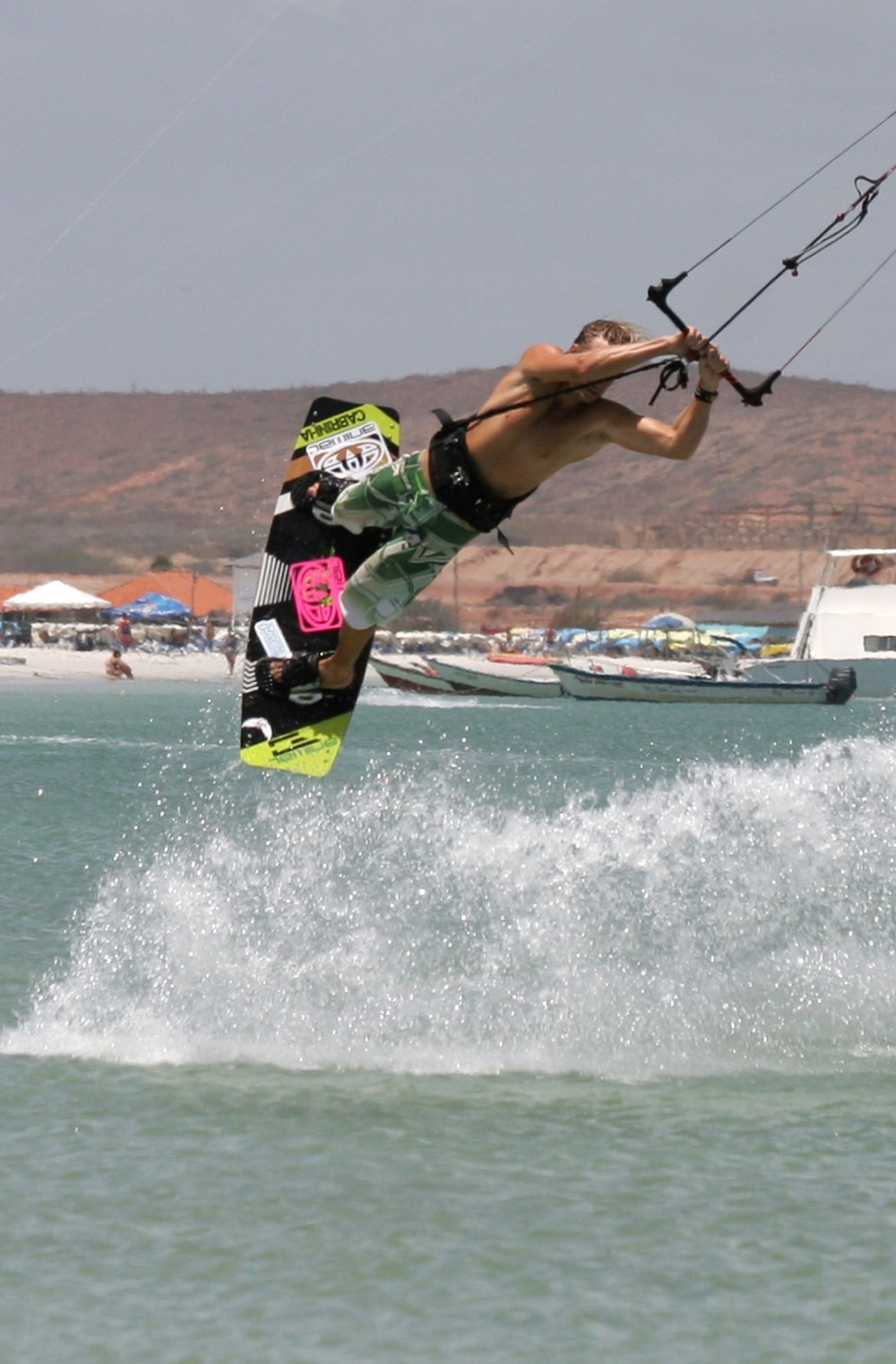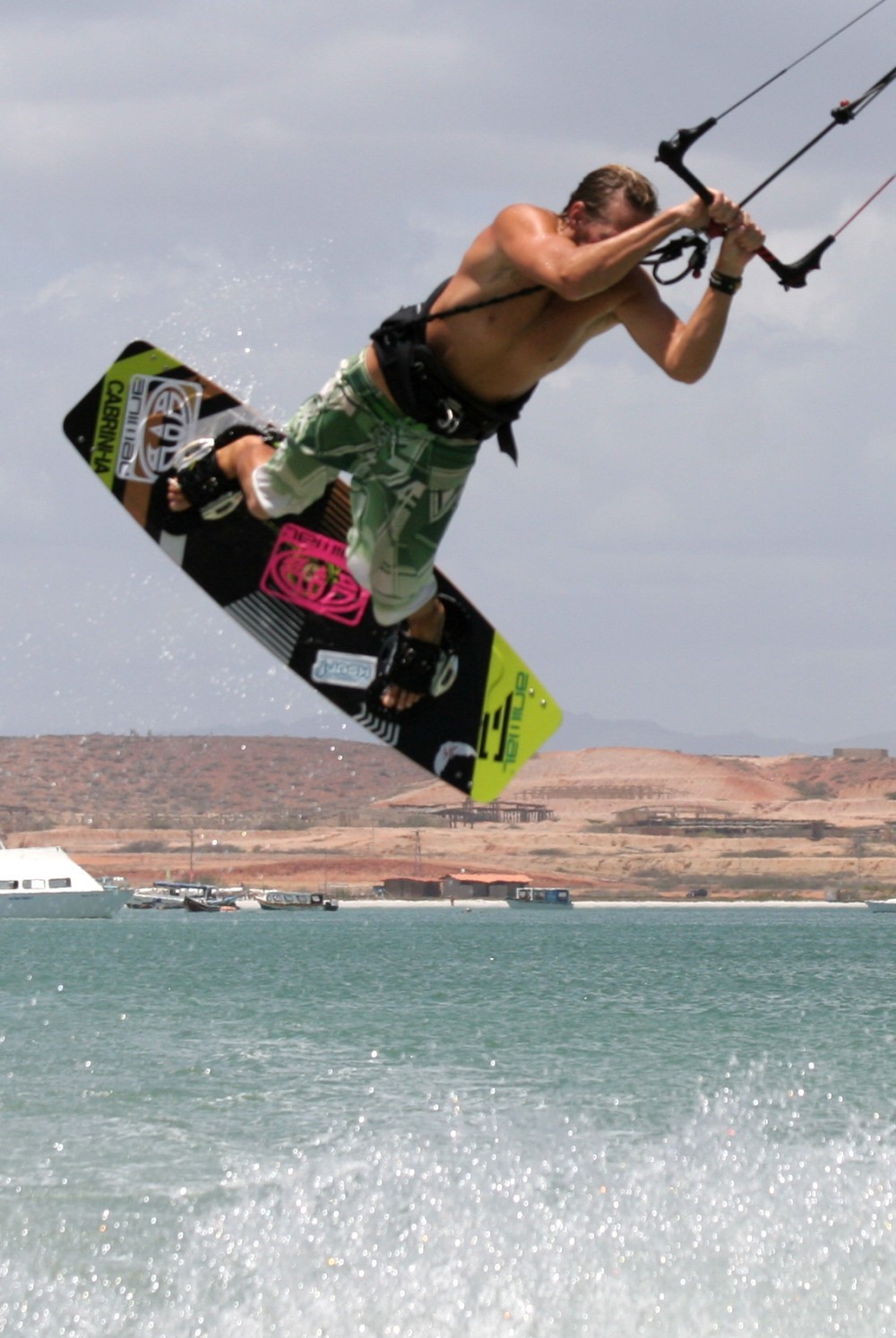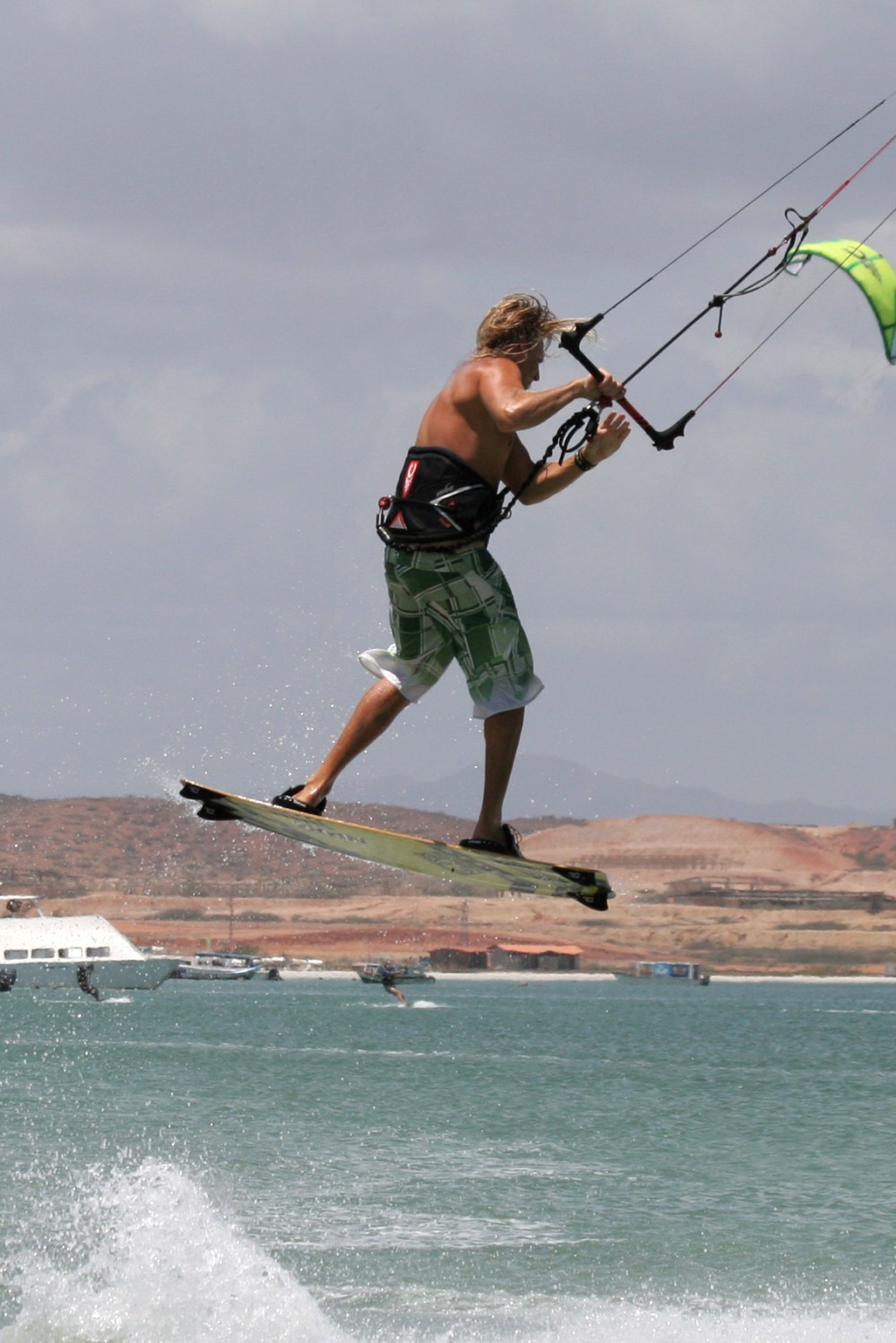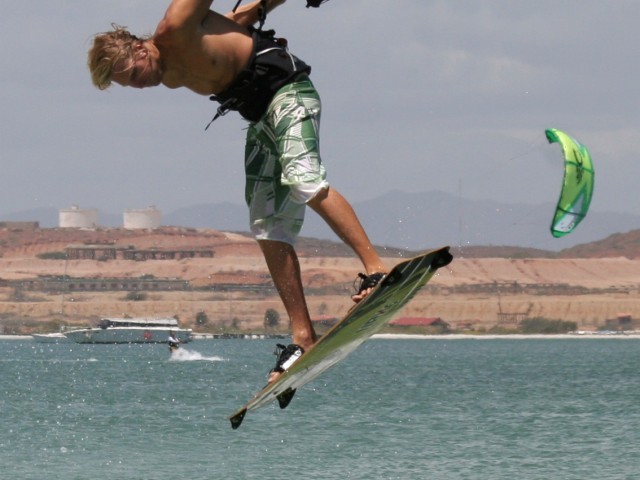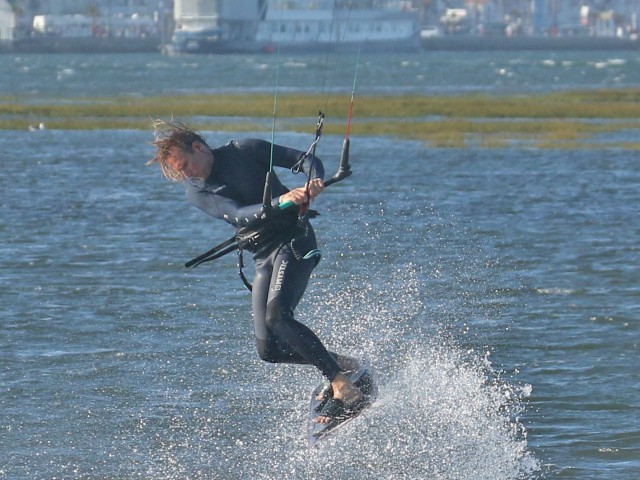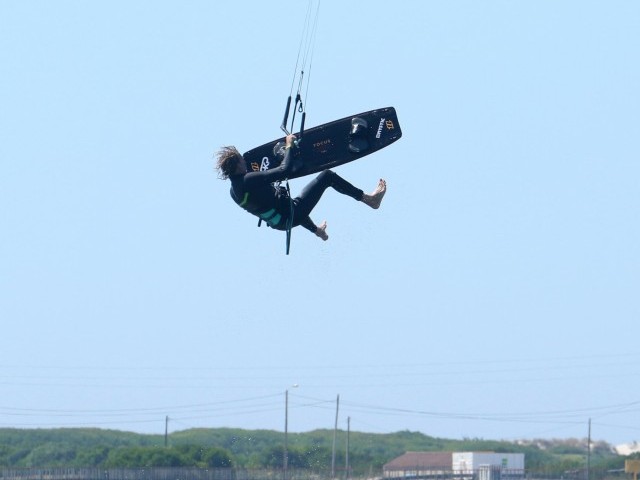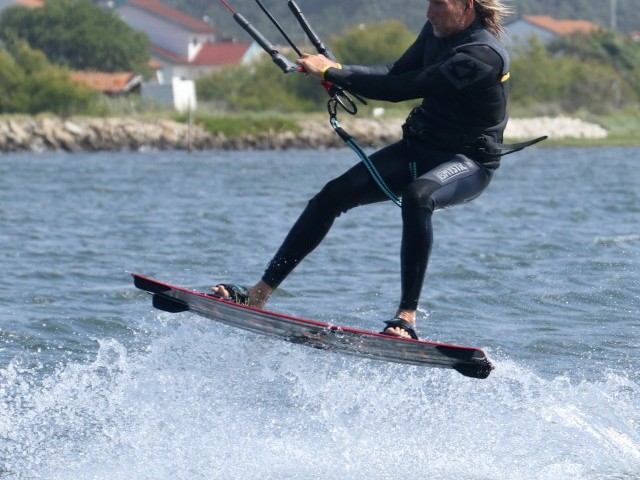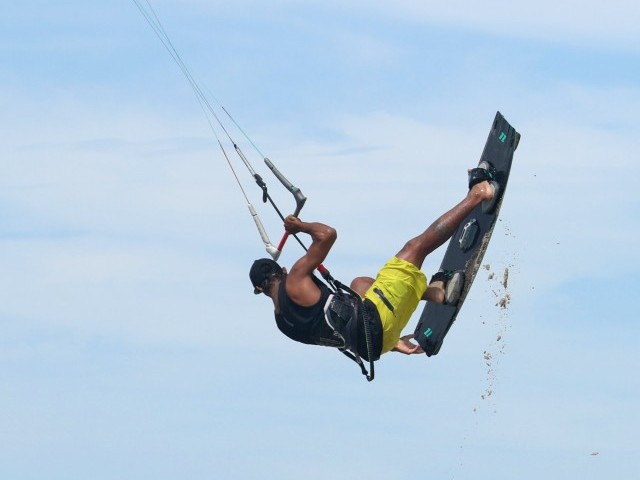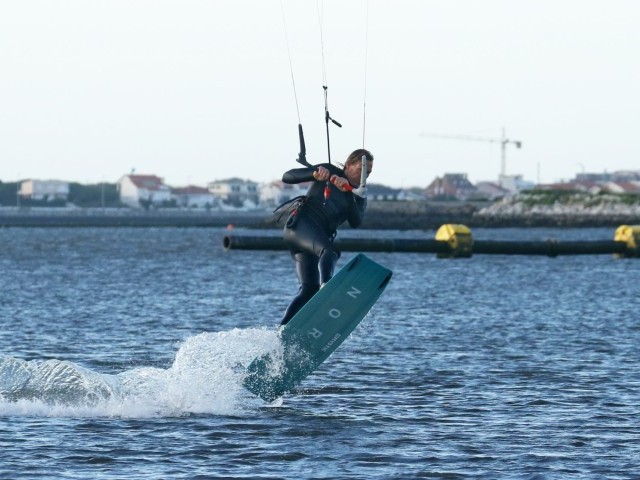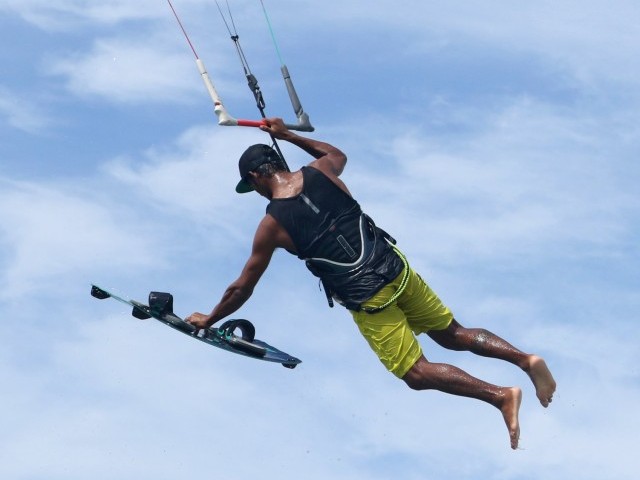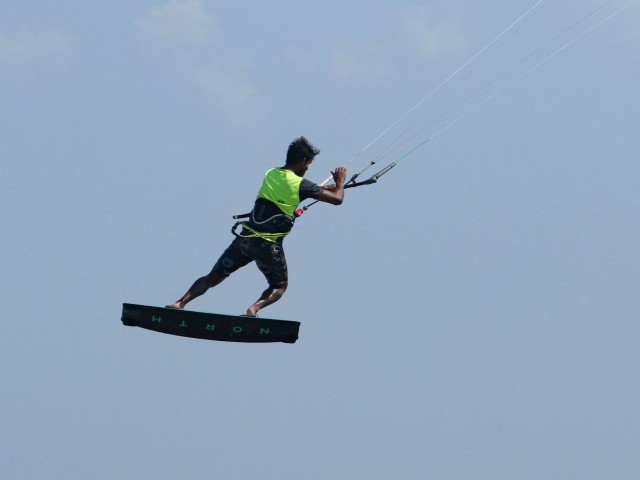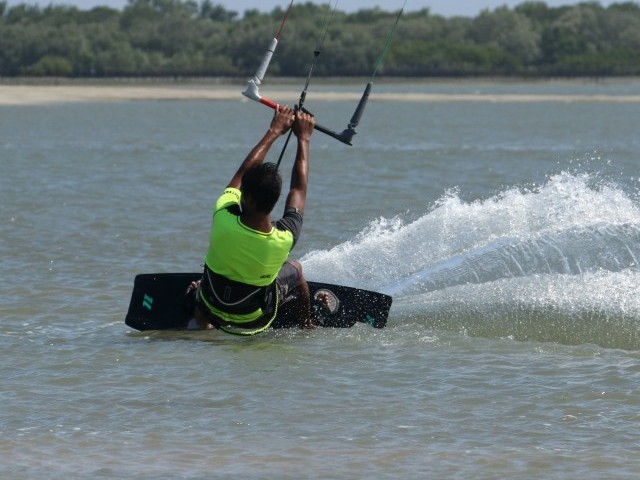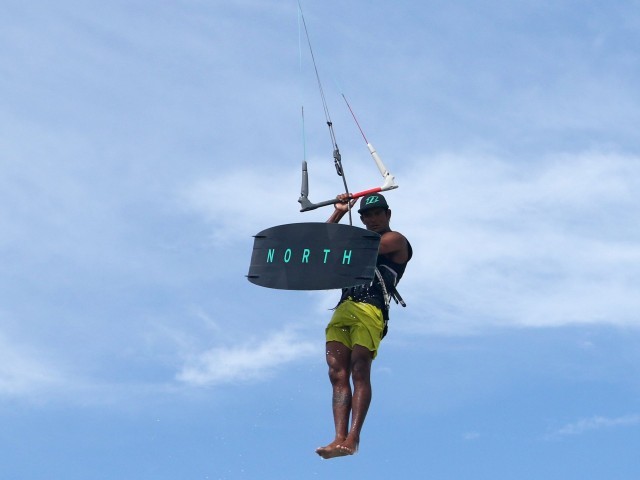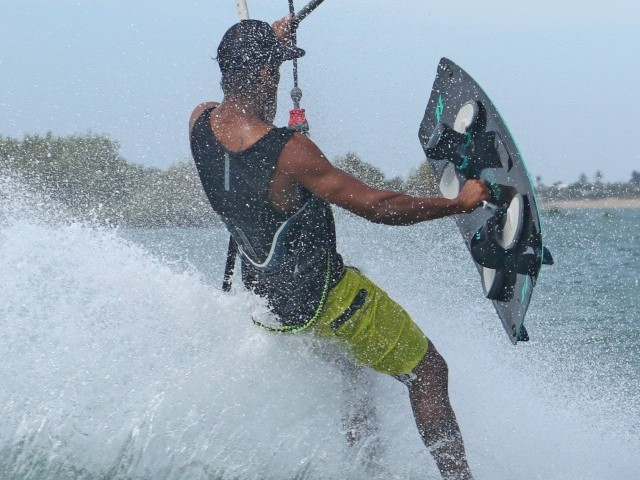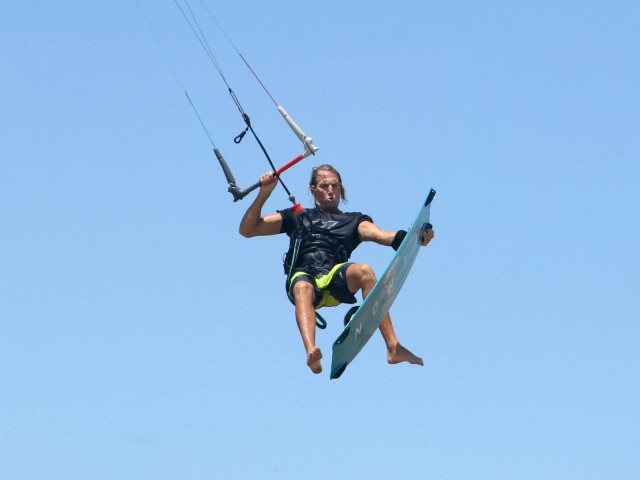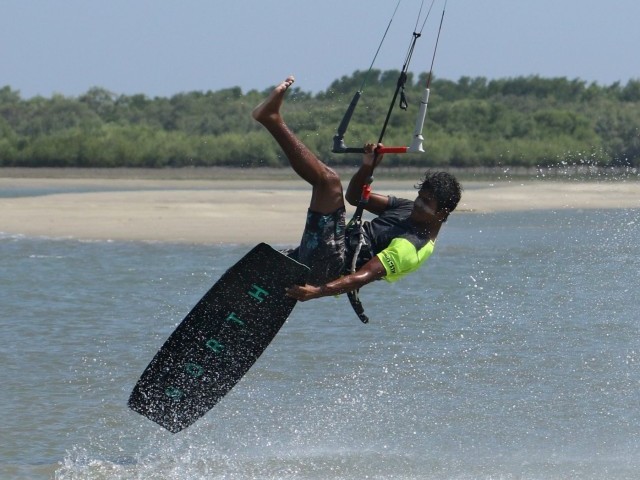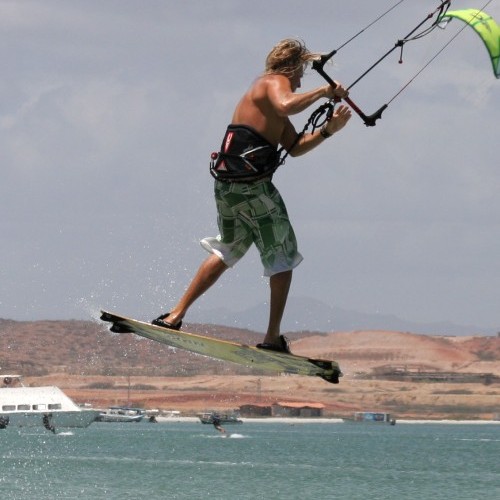
Blind Judge
Technique / Advanced
Introduction
Simply put - a great move, looks the biz and definitely one that once you have it nailed, rewards with a high percentage return rate. In English the blind judge is an unhooked raley to blind but with an air pass rather than a surface pass, see Sequence 1. Now without wanting to slow anyone in their tracks or piddle on anyone’s fire, having the raley to blind down is a bit of a must. Although this move is an extension of the raley to blind, they themselves need to be accurate so that you can attempt this with the required power, height and kite control, which will give you time to pass the bar comfortably and confidently in the air. However if you’re of the gung ho mentality and still have the rubber bounce back anatomy of youth blaze onwards!
Ironing Out the Blues
In preparation to the blind judge we’ll have a quick ponder on kite control, the take off and the actual raley. As always these are not set in stone how to do it, but very much how to learn it. Follow these steps and the learning process will be simpler. Once you’ve nailed it you can add your own style!
In all pass moves kite control is king. Too high and passing is difficult, to low and time becomes scarce. Much like an apple, once we stop going up we come down pretty quickly, so to get your pass in convincingly you’ll need to be a tad higher than you’ve probably considered “cool” in your raleys. Apart from pop, kite position will help. So experiment and find out where you can get height but still have enough forward momentum so that when you land the kite is light. This will be somewhere in the region of 11 or 1, where the kite looks like it is flying forward and not up.
Also very important is the fact that the kite doesn’t and will not move when you go for the pass. The most common problem with a raley to blind is the kite crashing down when kiters release their back hand. You must pull with two hands before you release and rotate with just one on the bar. This difference is tiny, fractions of a second, but the end result is huge.
In Pic A. we see Christian practicing for his blind judge. Its pretty easy to see that he’s not really in a raley position with both legs parallel to the water, but rather he has carved the board right up into wind and under him so that it has flicked around. Before attempting any blind judges this is something to get your head around. Believe it or not from here everything, from his back foot to the bar, is in the right position to rotate and pass! If you’re a raley King or Queen this may take some getting used to.
Pic B. has Christian paused in the raley just before passing. Once again you wake aficionados will not be impressed, but lets have a look at the advantages of this position.
Starting with his feet, we can see that the front foot is high. This is the foot that needs to come through. As it is high it can come through higher and therefore keep up longer, not dragging Christian down away from the bar.
The same goes for the front knee, just like the back knee in a shifty, from this position Christian can swing it through with gusto, and because it is high it will come around his body keeping him up, rather than swing under his body dragging him down away from the bar.
Christian has pulled in hard with both his arms; two are a lot stronger than one. He’s trying to get his head over the bar, so the emphasis is on pulling himself forward. If the kite is too high this will be hard.
Finally if we look at his hands and the bar, as a result of his body position, they are already twisting the bar, pre-empting which way it will go when he releases, which will make the pass so much easier.
Pic C. is the result of all the work in the previous two pictures. As Christian releases his back hand, his head is above the bar, so even when he drops he won’t be so far away from it. His front wrist and arm are already twisting which has allowed him to rotate early. His front knee has swung around and under the bar, giving him the momentum to turn all the way and bring his body under the bar so he won’t be stretching for it. Final point here is that if the kite is not too low, Christian can tweak it down a tad to make the pass easier.
Pic D. The moment of truth! Firstly, because Christian released his back hand late, it was much nearer his body, and therefore it doesn’t have as far to travel to grab the bar on the other side of him.
Secondly because his wrist, arm and bar were already twisting he has got the bar around ready to grab quickly. Thirdly, due to the emphasis on getting his head over the bar, his front leg high and swinging his body under the bar, Christian doesn’t need to be a contortionist or even particularly agile (just as well) to grab the bar as its pretty close to him.
The final but by no means least important part of this puzzle is to hold on with your front hand until the back hand can grab the bar. You need to rotate far enough to grab the bar behind you, which is further than you think compared to what you are used to. And effectively you are rotating around your front arm, so if you let go thinking you’re not going to make it, you won’t.
Last Words
Timing! Unlike the raley to blind in which you wait and throw the blind at the ultimate moment, you need to get a wiggle on in the blind judge. As soon as you are at the apex of your pop you need to be rotating, as you’ll drop like a stone. So as soon as you legs are extended you must start bringing everything in and together.
Get a bar and walk through this on land. Really concentrate on turning everything upwind, and then pull the bar past your hip onto your bum. This should give you the sensation that, theoretically at least, you could pass the bar behind your back without rotating the full distance.
Following Sequence 2
- Pic 1. With the kite around 1 o’clock and good speed Christian has gone off the wind, unhooked and is now carving hard upwind, full kite face, and very straight front leg.
- Pic 2. As the board turns underneath him Christian explodes up off his back leg, allowing his shoulders and bar to turn with his legs.
- Pic 3. A split second after take off Christian is in full “boobies upwind” mode, stretched out and ready to swing everything through.
- Pic 4. As he gains some height Christian starts his rotation to blind. He pulls in hard with both hands, aiming to pull them all the way to his right buttock. At the same time Christian pulls his right leg up aiming to bring his knee to his hands.
- Pic 5. As his body swings towards the kite Christian has pulled his head up over the bar and has started to twist the bar and turn his body into the rotation. He still has two hands on the bar.
- Pic 6. Christian releases his back hand and turns his head down and around.
- Pic 7. With the bar ready and waiting Christian reaches behind his back and grabs the bar with his free hand.
- Pic 8. Christian lets go with his old front hand and lifts his head in order to get his weight over his feet as he drops
- Pic 9. Christian lands ready to absorb the impact with his legs. Once he’s stable he can either, slide back to heelside, pop back to heelside, carve round to heelside or ride out toeside. If you really wanted to show off you could pop to wrapped from toeside!!!
Common Problems
We’ve already covered them in essence, but trying to do this trick really low, with no power and a low kite is hard. If you have the skills of a raley to blind, use them, but don’t think of this move as the same thing because the timing is so different. Get some height, turn upwind and hold onto the pass.
To learn with less power will mean putting the kite higher. If you do this you will need to give the kite a quick flick down just before you go for the pass, to stop the kite lifting the bar up and away from you.
Keystones
- Carve long upwind.
- Body, boobies and bar upwind.
- Pull with 2 hands down to your bum.
- Turn head before releasing back hand.
- Hold on.
This technique article was in Issue 23 of IKSURFMAG.
Related
By Christian and Karine
Christian and Karine have been working together as a coaching team, running improver to advanced kitesurfing clinics since 2003.






